Learn to Read Labels. Europe. 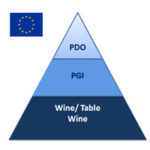
In the art of wine selection, where the choices are as diverse as the palates that make them, mastering the skill of navigating wine labels emerges as an invaluable asset. Indeed, these labels harbor a wealth of information, awaiting extraction by those who know how to decipher them. While this proficiency may not immunize one from occasional missteps, it renders choices more informed and aligned with the desired characteristics of the chosen wine.
Continue reading Learn to Read Labels. Europe.
Learn to Read Labels. France. 
The benefits of knowing how to read wine labels and understanding of wine law common for EU are discussed in the article “Learn to Read Labels. Europe.” Here, I will be talking about things that are specific to France. I will not be returning to the basics, so I highly recommended reading the article about Europe first, as it is quite important for understanding this one.
Continue reading Learn to Read Labels. France.
Wines of Greece 
Situated at the genesis of global winemaking, Greece is the progenitor of European viticulture. While historical records are obscured by the veils of time, it is conjectured that viticulture journeyed to Greece from Egypt and Phoenicia, with roots extending back to Caucasus and Mesopotamia. Assuming the mantle, Greece not only nurtured the industry but also disseminated it across the entire Mediterranean region. For four, perhaps even six millennia, Greece has been cultivating grape varieties that trace their lineage to antiquity.
Continue reading Wines of Greece
Burgundy. Introduction 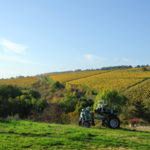
Burgundy has often been named the stomach of France (as Paris is the head, and Champagne is the soul), but I don’t think that such a comparison is correct. If you associate France with the body, then Burgundy is its tongue with all its taste buds. Because Burgundy is not about gluttony, it is about enjoyment. Enjoyment of meal, enjoyment of wine. For this Burgundy has everything. As Burgundians say – it is an Epicurean place. Burgundian wines are famous around the world.
Continue reading Burgundy. Introduction
Wines of North Burgundy 
About Burgundy in general I am talking here, so let’s talk about North Burgundy in particular. In our wine case, we are talking about the Yonna region. The most well-known part of Yonna is Chablis. Famous, worldwide known wine. One of the most often illegitimate used names. Absolutely unique Chardonnay. Many simplified wine maps show this part of France just like Chablis, not caring about anything else. However, not only Chablis exists on the wine hills of the region. So, Yonna.
Continue reading Wines of North Burgundy
Wines of Crete 
My comprehensive account of Greek viniculture, encompassing its history, wine laws, key inland regions, diverse wines, and my personal impressions, can be explored here. For insights into the distinctive wines of Santorini, delve here. Now, let’s turn our focus to the viniculture of Crete, the very birthplace of Greek viniculture and a land where its modern renaissance shines brightly.
Continue reading Wines of Crete
Ratafia de Bourgogne 
Not only wine filled the alcohol world of Burgundy. If you ask locals what to try specifically Burgundian, they tell you about Ratafia. In the world, the word Ratafia is used for two different things. Actually, for three, but the third one is biscuit and is not related to the subject of this topic.
Continue reading Ratafia de Bourgogne
North Burgundy. Coteaux de Tannay and Melon de Bourgogne 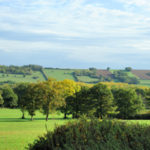
Coteaux de Tannay was the last place on our Wine and Waters journey for the bike and wine visit. Administratively it is located in Burgundy, and the climate and soil are also typical for Burgundy. However, accolading wine territorial classification, it belongs to Loire Valley. Tannay’s winemakers make wine in the Burgundy tradition (that is logical), but it cannot be named Burgundy (because belongs to the Loire formally), so it got the IGP title. The main varieties are Chardonnay and Pinot noir, as everywhere in Burgundy, and also Melon de Bourgogne.
Continue reading North Burgundy. Coteaux de Tannay and Melon de Bourgogne
North Burgundy. Vezelay 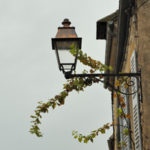
Vezelay – it’s about history, architecture, religion, and wine.
Continue reading North Burgundy. Vezelay
North Burgundy. Irancy 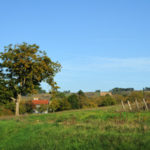
Irancy is a small, nice town, that is located on the right bank of Yonna, about four kilometres from the river. It was founded in 900 AD when Abbot Richard, Duke of Burgundy expanded his abbey. Also, it is one of the most northern French AOCs for red wines. Its specialization is Pinot noir. And it is also the ideal place to understand the idea of terroir.
Continue reading North Burgundy. Irancy
Valpolicella – Recioto, Amarone, Ripasso. Everything but the squeals… 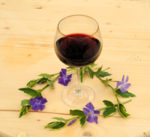
In the northeast of Italy, in the vinicultural zone Veneto, the wine region Valpolicella locates that produces wine under the same name. This is one of the well-known Italian red wines, alongside Chianti, Barolo, and Brunello, if not in terms of quality, then at least in terms of quantity.
Continue reading Valpolicella – Recioto, Amarone, Ripasso. Everything but the squeals…
Wines of Santorini 
For a comprehensive exploration of Greek viticulture, peruse the insights shared here. Now, let’s immerse ourselves in the captivating world of Santorini, an Aegean Island boasting a vinous legacy that traces its roots back to antiquity.
Continue reading Wines of Santorini
Jerez/Xerez/Sherry 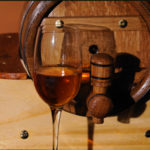
The best accompaniment for this article is a glass of good sherry. So, pour yourself some Amontillado or well-aged Oloroso before reading on. Jerez, also known as Sherry, a name that is more popular in the English-speaking world, is a wine that’s remarkable in many ways. Particularly, Jerez is a wine that connects you to history—you could share your glass of Jerez with an Englishman who lived a hundred years ago, quite literally, without it costing you all the world money. Of course, not every drop in your glass would have mingled with drops from that gentleman’s glass, but some of them truly have. Part of the special charm of Jerez lies in this living connection to the past, beyond its inherent taste qualities.
Continue reading Jerez/Xerez/Sherry
Wines of France. Buzet AOC 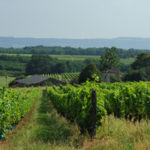
Let’s talk about the small wine region Buzet, which I searched out travelling on the barge and tasting local wines; about a trickery of Bordeaux wine negotiants; and about winemaking co-ops.
Continue reading Wines of France. Buzet AOC
Beaujolais Nouveau. The First Wine of the Harvest. 
On the third Thursday of November, Beaujolais Nouveau of currant year’s harvest appears on the market. This is the first wine of this harvest; all others still need a lot of time until they are ready for consumption. In France, England, Japan and many other countries this is the feast day (and not just a single day), the celebration day of a young wine.
Continue reading Beaujolais Nouveau. The First Wine of the Harvest.
|














